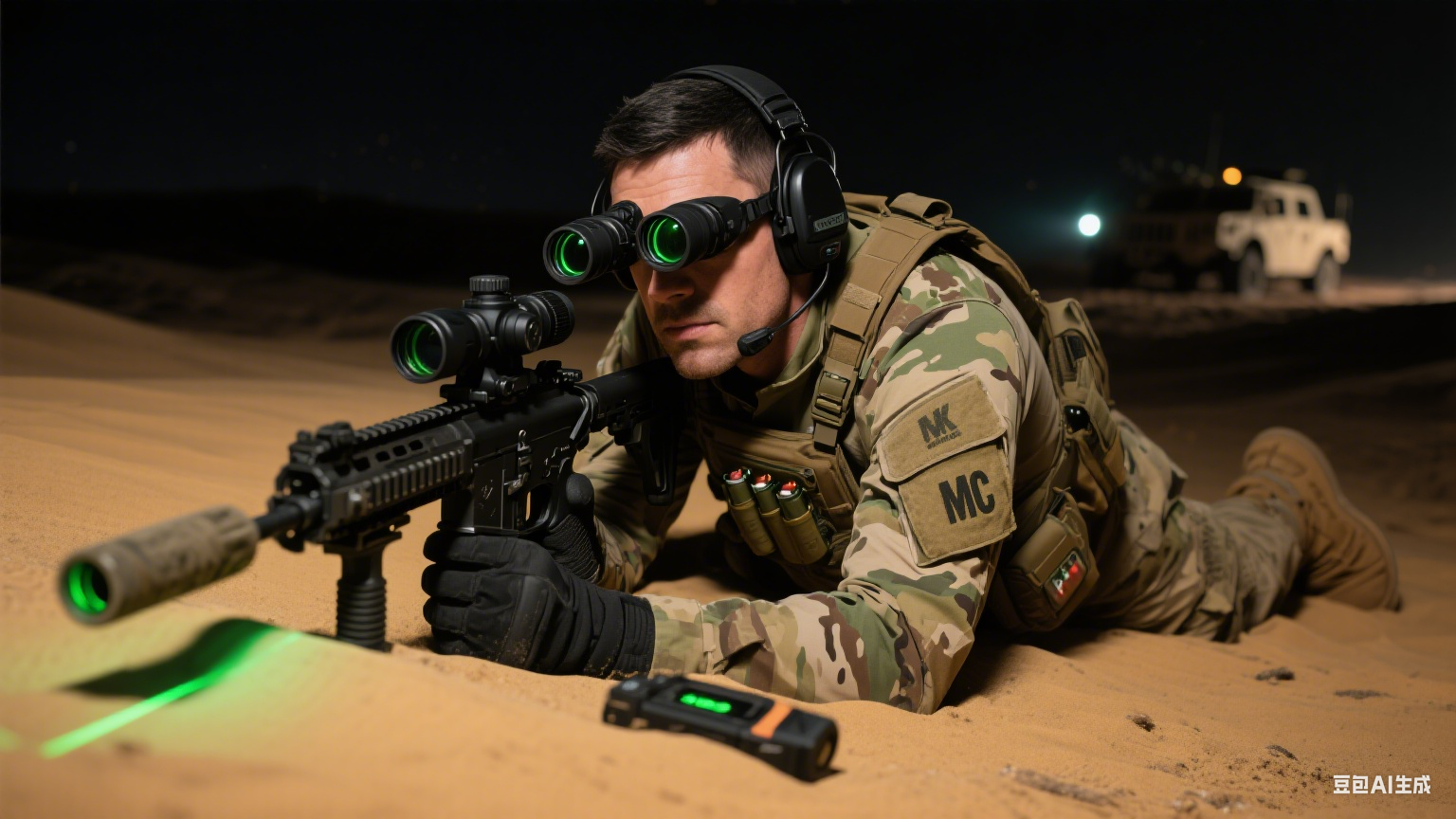The global demand for high-performance night vision goggles (NVGs) tailored to special forces (SF) operations has driven military contractors and defense suppliers to seek reliable OEM partners capable of delivering cutting-edge, battle-tested solutions. As a professional military equipment OEM manufacturer with over two decades of experience, we specialize in producing night vision systems that meet the rigorous demands of modern warfare, counterterrorism, and reconnaissance missions. This article explores the critical factors in selecting OEM NVGs for SF units and highlights our capabilities in delivering mission-critical optics.
Understanding Special Forces Requirements
Special forces operators require NVGs that combine lightweight ergonomics, multi-spectrum imaging, and extreme environmental resilience. Key specifications include:
-
Low-light performance: Ability to function effectively in 0.1 lux illumination or below. -
Durability: MIL-STD-810H compliance for shock, vibration, and temperature extremes. -
Compatibility: Integration with helmets, weapons systems, and infrared lasers. -
Power efficiency: Operational endurance exceeding 8 hours with standard batteries. -
Customization: Modular designs for rapid component upgrades (e.g., thermal fusion modules).
OEMs must prioritize these parameters while adhering to strict NATO or U.S. Department of Defense procurement standards.
Why OEM Partnerships Matter
Off-the-shelf NVGs often fail to address mission-specific needs. OEM collaborations enable defense agencies and contractors to:
-
Optimize cost-efficiency: Bulk production reduces per-unit costs by 30–45%. -
Ensure supply chain security: Domestic manufacturing minimizes geopolitical risks. -
Leverage proprietary technology: Access to patented image intensifier tubes (I²) and AI-driven target recognition software. -
Maintain IP control: Custom designs protect intellectual property and operational secrecy.
Our facility, certified under ISO 9001 and AS9100D, operates dedicated R&D labs for prototyping and accelerated life testing, ensuring products exceed operational expectations.
Core Technologies in SF-Grade NVGs
Modern NVGs integrate advanced technologies to enhance situational awareness:
-
Generation 3+ I² Tubes: Gallium Arsenide (GaAs) photocathodes for superior photon conversion. -
Digital Hybrid Systems: Combines thermal imaging (uncooled microbolometers) with traditional NVG optics. -
Wireless Connectivity: Real-time video streaming to command centers via encrypted Bluetooth 5.2. -
AI-Powered Analytics: Automatic target tracking and threat detection algorithms.
Our OEM solutions incorporate these technologies while allowing clients to select component suppliers (e.g., L3Harris, Elbit Systems) for cost or performance optimization.
Case Study: Custom NVG for Urban CQB Operations
A European SF unit required NVGs optimized for close-quarters combat (CQB) in urban environments. We developed a compact, dual-tube system with:
-
120° Horizontal Field of View (HFOV) for enhanced peripheral vision. -
IP68 waterproofing to withstand submersion in 2m water for 30 minutes. -
Quick-release mount compatible with MICH 2000/ACH helmets. -
Battery compartment relocation to reduce front-heavy balance issues.
The system underwent live-fire testing in simulated urban warfare scenarios, achieving a 40% improvement in target acquisition speed compared to legacy models.

Quality Assurance and Compliance
All NVG OEM projects follow a four-phase quality control process:
-
Material Verification: Spectrographic analysis of aluminum alloys and polymer composites. -
In-Process Testing: Real-time monitoring of tube alignment and optical clarity. -
Environmental Stress Screening: Temperature cycling (-40°C to +70°C), salt spray, and sand/dust exposure. -
Final Acceptance Testing: 100% functional inspection per MIL-PRF-19963 standards.
We maintain traceability records for 10+ years, supporting long-term maintenance contracts for clients.
Global Market Trends and OEM Adaptability
The NVG market is projected to grow at 7.2% CAGR through 2030, driven by demand for:
-
Multi-spectral imaging (visible/NIR/SWIR fusion). -
Open architecture designs for third-party software integration. -
Lightweight materials (e.g., carbon fiber housings reducing weight to <350g).
Our production lines can scale from 500 to 10,000 units annually, with flexible MOQs for prototyping or full-scale deployment.
Conclusion
Selecting the right OEM partner for SF-grade NVGs requires balancing technical expertise, compliance rigor, and logistical flexibility. Our track record in delivering over 25,000 NVG units to Tier 1 operators underscores our commitment to excellence. By aligning with client-specific operational needs and leveraging next-generation technologies, we empower defense forces with the optical superiority demanded by modern asymmetric warfare.
References
-
Military Technology Review, “”Special Forces Equipment Market Analysis 2023.”” -
Global Defense Standards Organization, “”Night Vision Device Testing Protocols.”” -
ISO 9001:2015 Quality Management Systems. -
NATO STANAG 4577: Night Vision Imaging System Standards.”